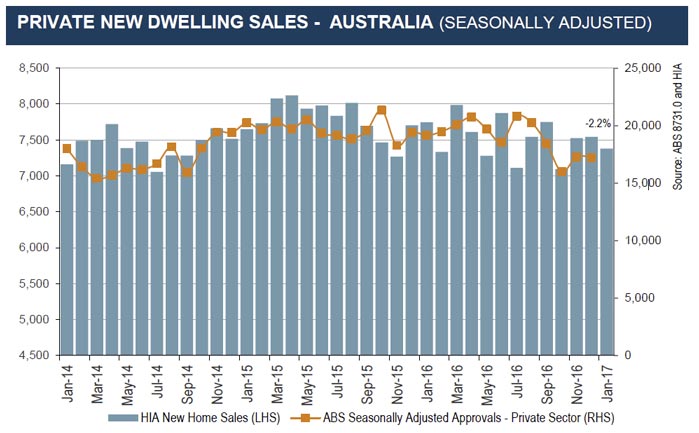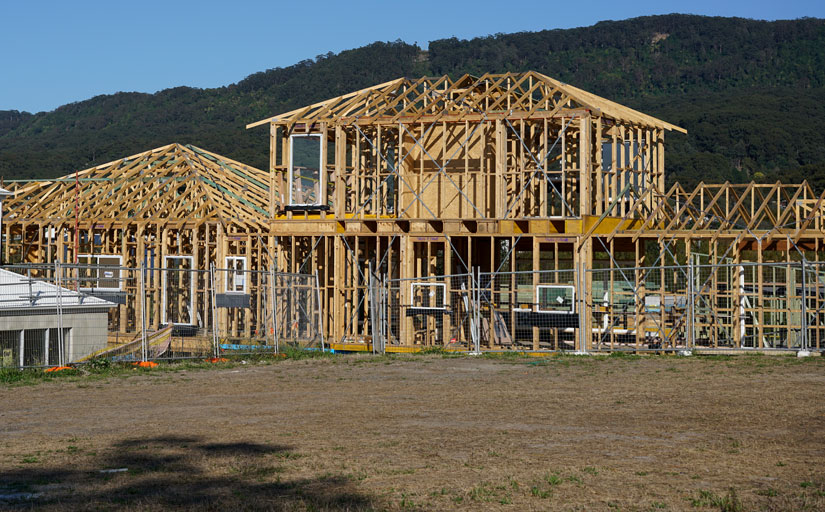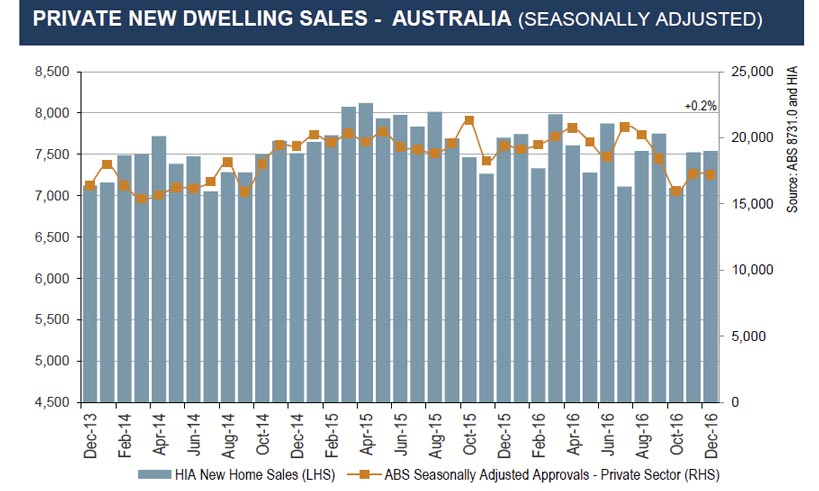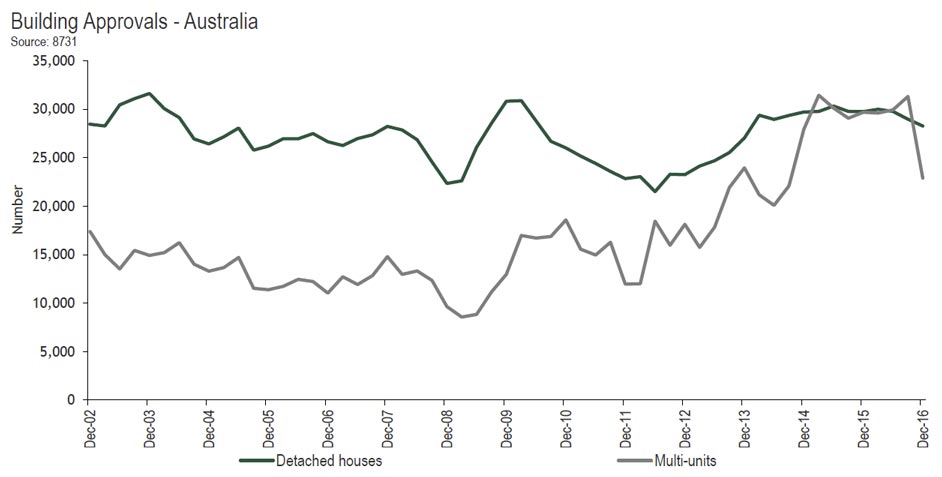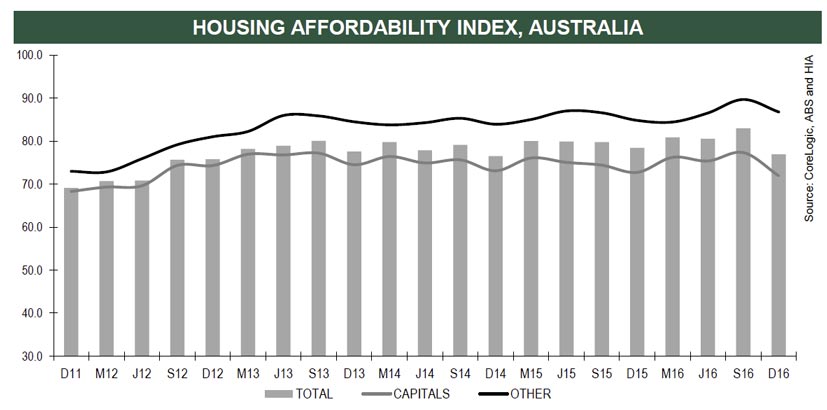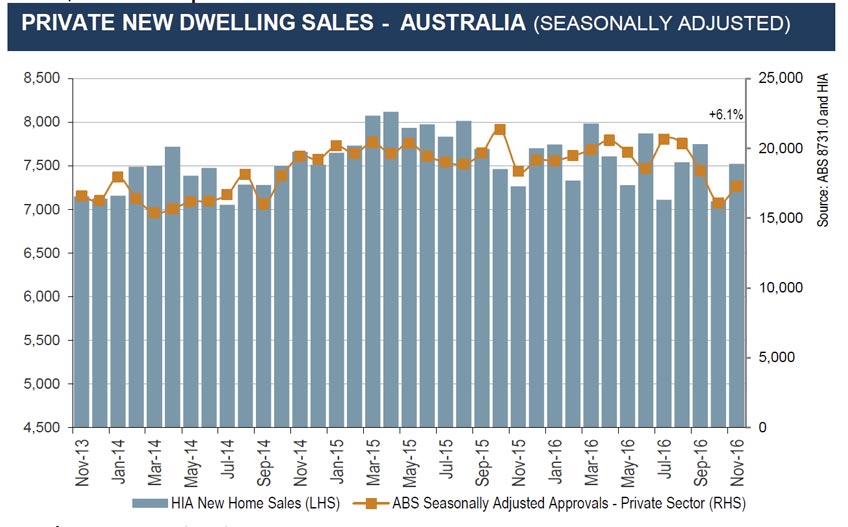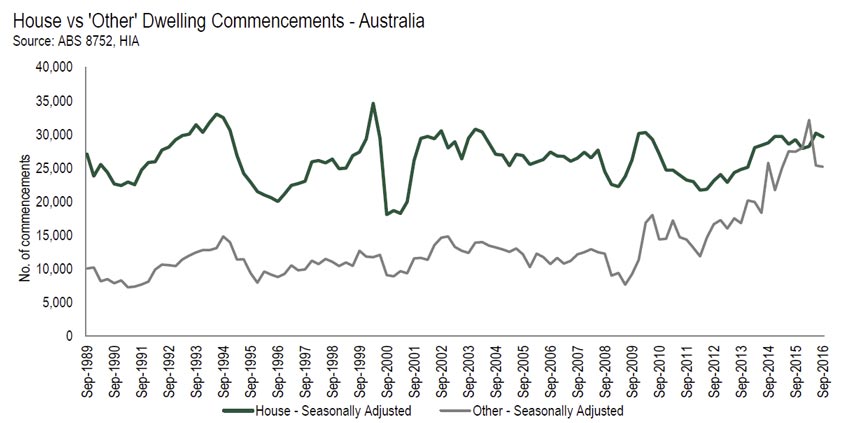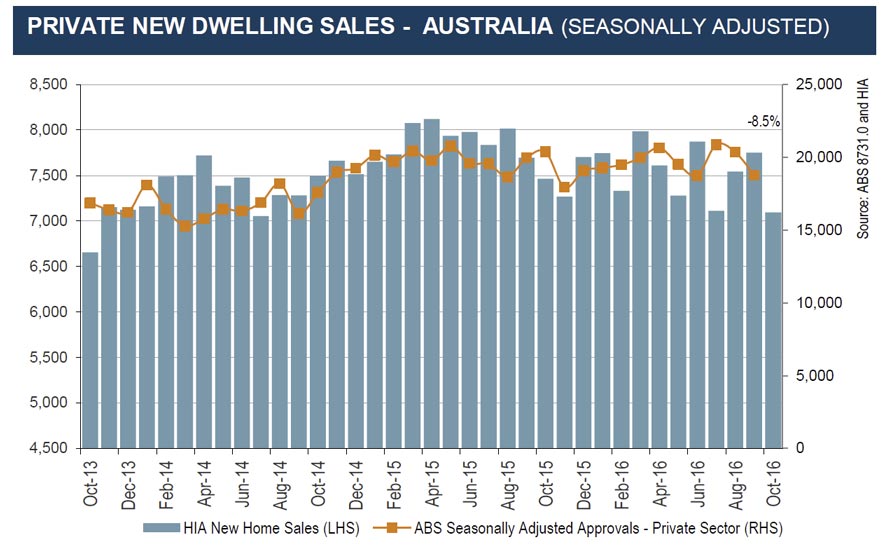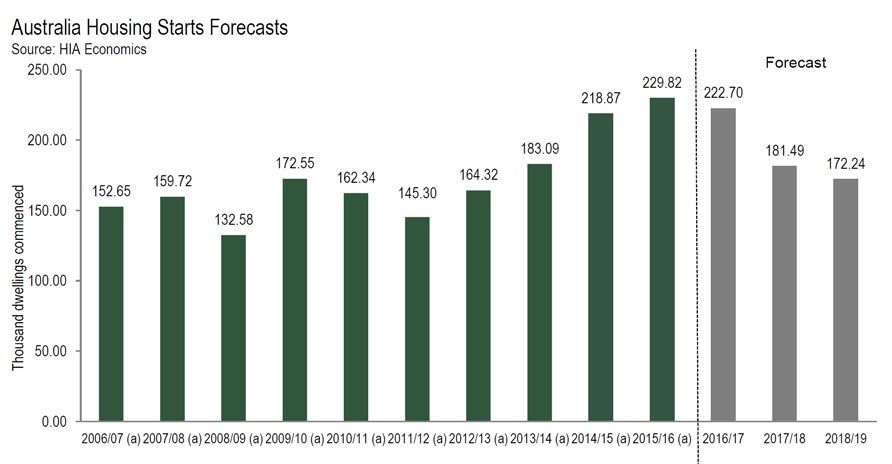The first key new housing update for 2017 provides a softer update, said the Housing Industry Association.
The January 2017 update for the HIA’s monthly New Home Sales survey reveals a decline of 1.5 per cent in detached house sales following a similar fall of 1.6 per cent in December last year. Detached house sales fell by a very modest 1.1 per cent over the three months to January 2017 to be down by 4.0 per cent when compared to the same period 12 months previously. The sale of ‘multi-units’ dropped by 4.3 per cent in January following an increase of 6.4 per cent in December 2016. Over the three months to January 2017 multi-unit sales increased by 4.8 per cent to a level 9.0 per cent higher than the comparable period a year earlier.
Seasonally adjusted new detached house sales increased by 12.1 per cent in Western Australia in January 2017 following a sharp dip of 9.1 per cent last December. In the month of January 2017 detached house sales fell by 6.8 per cent in New South Wales, 4.1 per cent in Victoria, 2.0 per cent in Queensland, and 1.4 per cent in South Australia.
“The HIA New Homes Sales Report – a survey of Australia’s largest home builders showed a moderate decline of 2.2 per cent in January 2017,” said HIA Chief Economist, Dr Harley Dale. “This weaker update does follow a relatively decent run home for new home sales in late 2016.”
“Given that Australia is tailing off from the largest and longest new home building cycle in history, both the total and sub-component profiles for new home sales are still in very good shape,” said Harley Dale.
“There aren’t many sectors punching above their weight in the nation’s economy right now, so the profile for new home sales is also good news for Australia as a whole.”
“HIA’s latest forecasts for new dwelling commencements will be released on Thursday and they will paint a healthy short term picture for residential construction. There is nothing to be seen in this latest update for new home sales or from any other recent leading indicator results to deter us from this outlook,” concluded Harley Dale.

